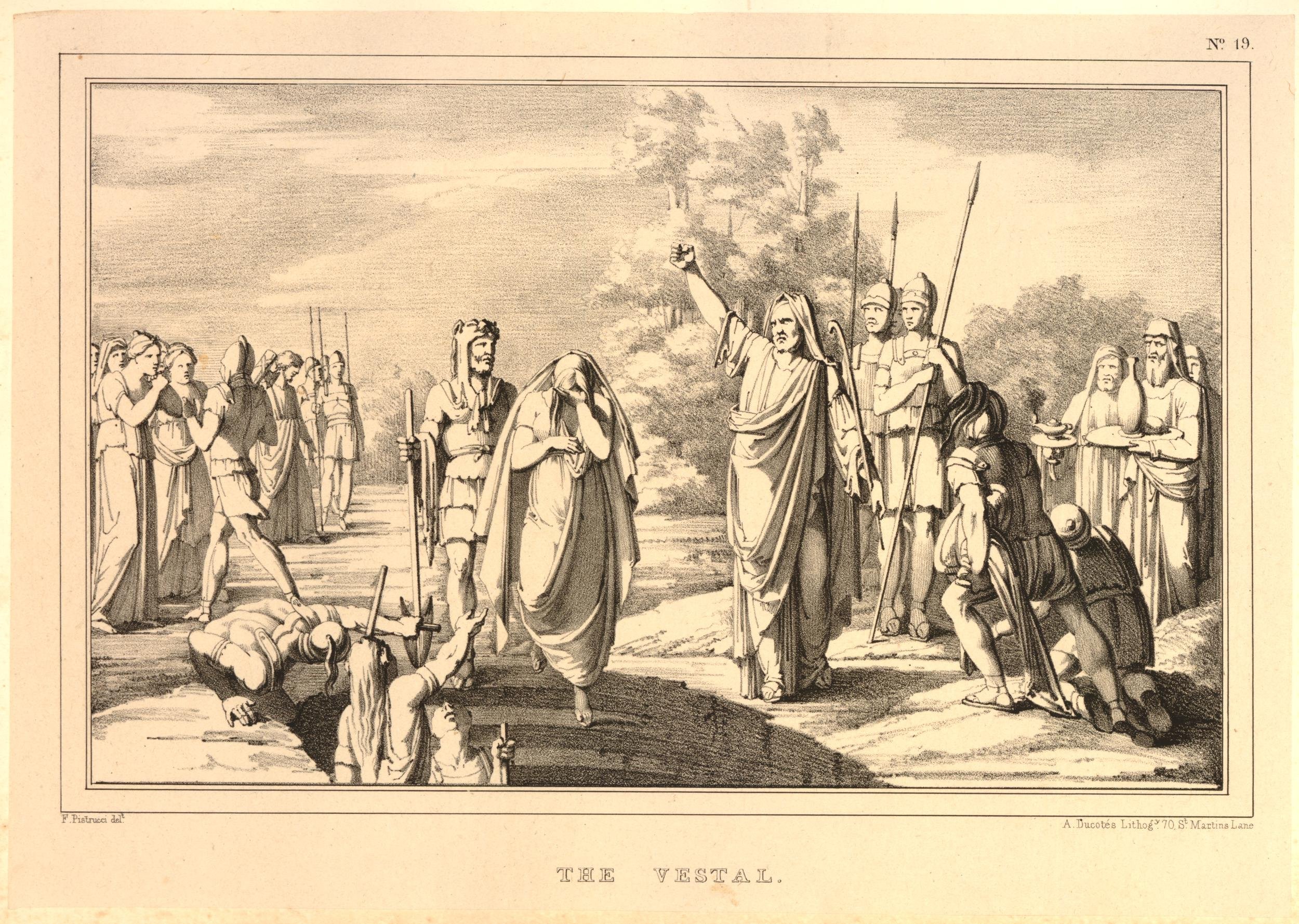Brides of Rome - The Vestals from Republic to Empire
This article is for readers of my novel Brides of Rome, which is book one in The Vesta Shadows Trilogy. This series spans the later years of the Republic and the early years of the Empire, and follows the life of the Vestal Virgin Pomponia Occia, who is based on the real-life priestess Occia. Since many of the characters and events you’ll read about in my novels are depicted on ancient Roman coins, I like to show readers relevant coins from my collection so they can see the real impressions of the people, legends and events that I’ve dramatized.
Theatrical Rehearsal in the House of an Ancient Rome Poet. Gustave Boulanger, Public domain, via Wikimedia Commons
But just a heads up - there are SPOILERS ahead, so you’ll want to finish reading the novel before reading. And if you’re following the trilogy, you may want to read the articles for To Be Wolves (book two) and Empire of Iron (book three) after this one.
Throughout all of my novels, characters often refer to the goddess Vesta as Vesta Mater, which is Latin for Mother Vesta. We know she was called this from ancient sources like Cicero but also because of coins like the below.
This is a very pretty denarius from around 200 CE of Vesta seated on a throne. The detail is really quite beautiful. You can see her dress, her head is veiled, and she’s holding the Palladium (circled). You can clearly read the letters VESTA MATER. The Vestal Pomponia refers to the goddess this way during a scene by the Tiber, where she’s speaking to a crowd of people.
Now if you look at this next coin, below, you’ll see that although the detail isn’t as clear, you can still make out the figure of Vesta standing, holding a sceptre and a sacrificial implement, either a simpulum or a culullus. You can also see the lettering VESTA FELIX.
Vesta Felix means something along the lines of fortunate Vesta, or lucky or happy Vesta. In the novel, the emperor Augustus (Octavian) refers to the goddess as Vesta Felix when he is at the racetrack. To me, that seemed to me a fitting place to invoke that aspect of the goddess.
Everybody needs a bit of luck. That’s doubly so if you’re a Vestal who is accused of doing things you shouldn’t be doing. Throughout the centuries that the Vestal order existed, it was a fairly rare occurrence for a Vestal to be accused and condemned for breaking her vow of chastity. Nonetheless, we see a dramatic image on the below coin, an image that essentially depicts the trial of a Vestal Virgin accused of breaking her vow.
This is the reverse of a silver coin, a denarius, struck in 55 BCE, during the Republic. What you’re seeing here is the circular temple of Vesta, with a curule chair inside. This kind of chair represents a seat of power—quite literally—in that only those who held power, or imperium, were able to sit on it. So here it would be the chair of a judge, more or less.
To the right, you can see a tablet with the letters AC – those stand for Absolve or Condemn. To the left, you have a voting urn. This image depicts a trial where people (men) are voting on whether this Vestal is innocent or guilty. They’ll market their tablet and then pull their vote in the urn.
Of course, if this priestess is found innocent and absolved, she can go on with her life and all is fine. However, if she is found guilty and condemned…
The Vestal. British Museum, Public domain, via Wikimedia Commons
…then she is effectively buried alive by being forced to descend into an underground pit which is then sealed off from the living world.
But that’s a dark thought. So we’ll end this article with a look at the obverse of the voting coin, below, which shows a pretty portrait of the goddess Vesta.
We’ve seen Vesta seated and standing in this article, but this is her close-up. To the right, you can see her name, abbreviated.
Thank you for reading. And again, if you’re following The Vesta Shadows Trilogy, you may wish to go on to read the articles for To Be Wolves (book two) and Empire of Iron (book three) when you’re finished those novels.






